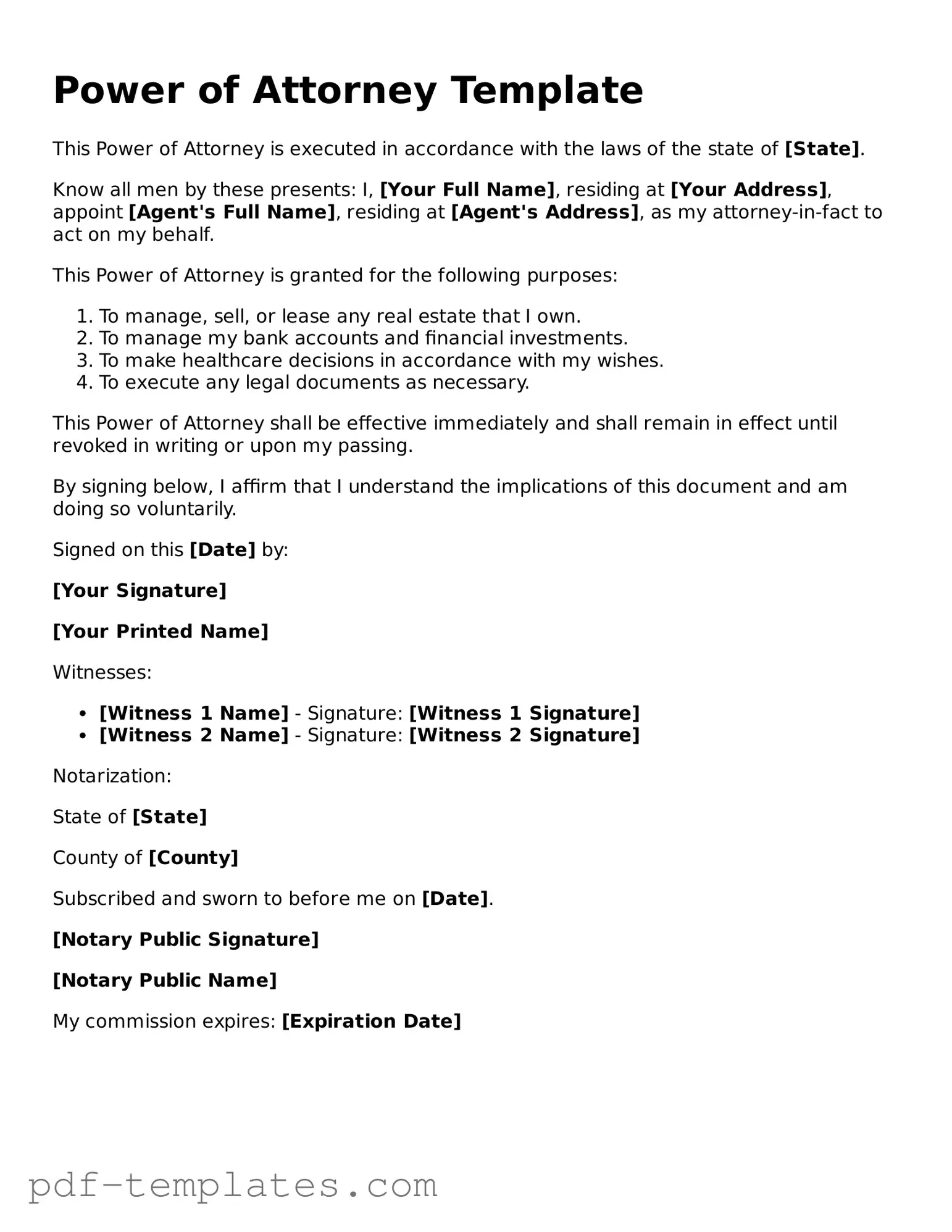Understanding the Power of Attorney (POA) form is crucial for anyone considering its use. However, several misconceptions often cloud the true nature of this important legal document. Below is a list of common misunderstandings, along with clarifications to help demystify the Power of Attorney.
- Myth 1: A Power of Attorney is only for the elderly.
This is not true. While many seniors utilize a POA, anyone can create one, regardless of age, especially if they want to designate someone to make decisions on their behalf in the event of incapacity.
- Myth 2: A Power of Attorney gives unlimited power to the agent.
In reality, a POA can be tailored to grant specific powers. You can limit the agent’s authority to certain tasks, such as managing finances or making healthcare decisions.
- Myth 3: A Power of Attorney is the same as a living will.
These documents serve different purposes. A living will outlines your wishes regarding medical treatment, while a POA designates someone to make decisions on your behalf.
- Myth 4: A Power of Attorney is only effective when I am incapacitated.
This is a common misconception. A POA can be effective immediately upon signing or can be set to activate only upon incapacity, depending on how it is drafted.
- Myth 5: I can’t change or revoke a Power of Attorney once it’s created.
You have the right to revoke or change your POA at any time, as long as you are mentally competent. It’s important to follow the proper procedures to ensure the changes are valid.
- Myth 6: All Power of Attorney forms are the same.
POA forms can vary significantly by state and purpose. It’s essential to use the correct form that complies with your state’s laws and meets your specific needs.
- Myth 7: A Power of Attorney automatically expires upon my death.
This is true. However, it’s important to note that a POA does not survive your death; it ends, and the authority granted to the agent ceases immediately.
- Myth 8: My agent can do anything they want with my money.
While an agent has authority to manage your finances, they are legally obligated to act in your best interest. Misuse of funds can lead to legal consequences.
- Myth 9: A Power of Attorney is not necessary if I have a spouse or family member.
Even if you trust your spouse or family member, a POA clarifies authority and can prevent disputes among relatives regarding decision-making.
- Myth 10: I can create a Power of Attorney without legal assistance.
While it is possible to draft a POA on your own, seeking legal advice ensures that the document meets all legal requirements and accurately reflects your wishes.
